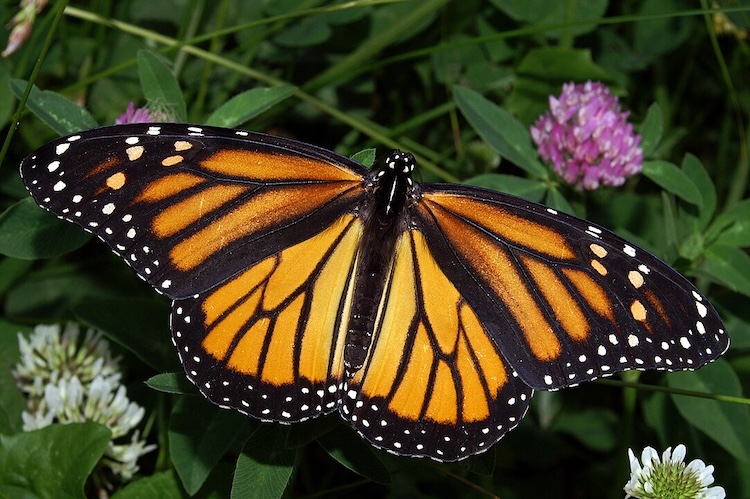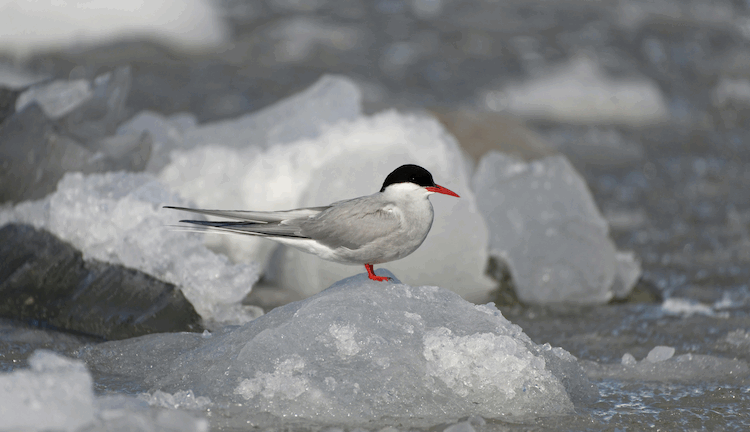UN Warns on Migration
By Ramesh Jaura
Migration is a memory, an ancient synchrony of wings, hooves, and tides. As the planet warms, that memory falters — and the world grows quieter without its travellers.
This article was first published on: https://rjaura.substack.com
BERLIN | 5 October 2025 (WorldView) — On a fog-thick morning in the North Atlantic, a right whale surfaces, her breath erupting like a sigh against the stillness. She is following a map older than memory, a route laid down long before ships cut across the ocean. But this year, the water is warmer, the currents unfamiliar, and the plankton she seeks is scattered farther north. She keeps swimming, burning through reserves of energy, toward waters where propellers and nets now lie in wait.
She doesn’t know it, but she is part of a story that spans continents and millennia — the great migrations of the Earth, now unfolding.
At a United Nations workshop convened earlier this year by the Convention on the Conservation of Migratory Species (CMS), scientists and conservationists from around the world gathered to discuss the impact of climate change on migratory animals. The short version: nearly all are in trouble.
“Migratory animals are the planet’s early-warning system, and they are in trouble,” Amy Fraenkel, the executive secretary of CMS, told me. She is a lawyer by training, but in conversation, her voice carries both the conviction of an advocate and the weariness of someone who has spent too many years watching the data point in the wrong direction. “From monarch butterflies vanishing from our gardens to whales veering off course in warming seas, these travellers are sending us a clear signal. Climate change is having impacts now, and without urgent action, the survival of such species is in jeopardy.”
The Seasons Betray the Travellers
Migration is not wandering; it is choreography. Birds lift off from southern marshes to arrive precisely as northern insects hatch. Caribou trace the retreating snowline, hooves ticking over frozen ground until the tundra blooms with lichen. Salmon wait for the signal of cold water before they force themselves upriver to spawn.
But warming has broken the clock. In the Arctic, geese are now arriving weeks earlier, likely in response to earlier snowmelt. Their goslings still hatch on the old schedule, only to discover that the nutritious flush of spring plants has already withered. What scientists call “phenological mismatch” translates to something more brutal in the field: chicks starving at the moment they most need abundance.
The mismatches ripple outward. Monarch butterflies alight on milkweed that no longer grows where it once did. Riverbeds that carried fish upstream for centuries are now dust by the time the fish arrive. A dance that once seemed eternal is being performed out of step, with no one left to keep time.
The Whale, the Wildebeest, the Butterfly
The whale in the North Atlantic is far from alone. In East Africa, the massed migrations of wildebeest — the very image of abundance, of movement as spectacle — are being carved apart by fences and dried-out rivers. The herds still roam, but the routes are narrowing, and the margins are thinner each year.
Meanwhile, the monarchs, long mythologised as the frailest of travellers, continue their improbable journey across North America, though now in diminished clouds. One Mexican conservationist described the forests where they overwinter as “less like stained glass, more like ash.”
According to CMS data, twenty-two per cent of listed migratory species are now threatened with extinction. Nearly ninety per cent are in decline. Among fish — sharks, rays, sturgeons — the figure is staggering: ninety-seven per cent. Numbers that once conveyed abundance now only count loss.

“A Multiplier of Threats”
“Climate change doesn’t arrive alone,” Des Thompson, a Scottish ecologist and CMS scientific councillor, told me over video call. His study window looked out on the Cairngorms, where golden eagles wheel across valleys still largely wild. “It magnifies every other pressure — habitat loss, infrastructure, pollution. A fence, a dam, a road — these things are harder to survive when water is scarcer or storms are more violent. We need to work with Indigenous Peoples and traditional knowledge holders to find ways of lifting these barriers.”
Thompson speaks with quiet patience, the hallmark of someone accustomed to navigating the delicate balance between science and politics. He is fond of examples — golden plovers in the Hebrides, capercaillie in the Highlands. Still, his point is always the same: climate change is a threat multiplier, and unless we remove the other obstacles, the warming world will do the rest.
An Indigenous delegate from the Sámi community in northern Europe, attending the workshop, described how reindeer herds are no longer able to reach their traditional pastures due to ice crusts formed by freeze-thaw cycles. “Our people know the paths,” she said, “but the ice does not listen.” It was not a scientific paper, but it carried the authority of lived history.
Corridors, Bridges, and a Chance at Continuity
If migration is movement, then conservation must be about clearing the way. Scientists and Indigenous leaders alike spoke of connecting habitats, of creating corridors that anticipate where animals will need to go as climates shift.
That might mean rethinking infrastructure—highways with green overpasses to let elk and caribou cross. Wind farms are built outside flyways. Dams re-engineered to release water for spawning fish. In some cases, it may mean the radical idea of “assisted migration,” in which humans transport species to places where they might have a better chance of survival. “It’s risky,” Thompson admitted, “but not as risky as doing nothing.”
Indigenous knowledge is central here, not as folklore but as a form of data gathered over centuries. The workshop concluded with calls to formalise such partnerships, weaving local understanding into global strategies. The science and the stories are, after all, observing the same unravelling.
What We Stand to Lose
It is tempting to think of migration as beautiful but peripheral, a spectacle rather than a necessity. But migratory animals are infrastructure. Whales fertilise the oceans, helping plankton draw carbon from the air. Birds and bats pollinate crops, keeping global agriculture viable. Fish migrations underpin entire food webs and the livelihoods of millions.
Their disappearance would not just impoverish our imaginations. It would unravel systems we rely on, sometimes invisibly, to survive.
A Decision in Samarkand
The findings from the CMS workshop now move to the political arena: the 14th Conference of the Parties, to be held in Samarkand, Uzbekistan. Governments will gather to decide whether to translate scientific warnings into policy and action.
Fraenkel did not sugarcoat the stakes: “The reason why the Convention covers species is because they are in trouble … The problem is the trend: forty-four per cent of listed species are in decline, and that increasing extinction risk is something that applies globally to migratory species.”
The whale in the Atlantic, the monarch crossing a farm field, the wildebeest at a dry riverbank — none of them will be present in Samarkand. But the decisions made there will decide whether their journeys continue, or whether the maps etched into their memory finally collapse.
If the migrations vanish, it will not only be animals that are lost, but also the ecosystems that will be lost as a result. It will be part of the Earth’s memory, its poetry — and ours. (WorldView)
Original Link: https://rjaura.substack.com/p/when-the-seasons-forget-the-travellers
Original Link: https://rjaura.substack.com/p/when-the-seasons-forget-the-travellers
Related link: https://www.eurasiareview.com/04102025-when-the-seasons-forget-the-travellers-analysis/

